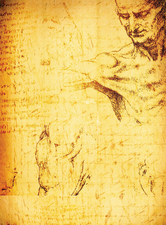Visual programming languages
Da Vinci Code

© Lead Image © Janaka Dharmasena, 123RF.com
Developers working with graphical programming languages point and click to build software from prefabricated modules. We look at five free visual programming development environments.
With graphical development environments, programmers simply use a mouse to draw a flowchart; then, the development environment translates it into a finished application. Developers do not need to learn cryptic commands, and they neither produce syntax errors nor suffer buffer overflows. Ideally, the development environment will even step through the program, visually emphasizing the currently active component and dramatically facilitating the troubleshooting process.
The first graphical development environments emerged in the 1960s, but only GUI editors or Rapid Development (RAD) tools are in common use. Developers use them to click together user interfaces for their applications (e.g., Glade [1] and Qt Designer [2]); however, in reality, only laboriously typed chunks of code bring the GUI elements to life. Design tools are similarly restricted, especially tools for Unified Modeling Language [3]. Again, they generate a code framework that the programmer fills with content at the keyboard.
If you look hard, you will find a surprisingly large number of visual programming languages (VPLs), for which their inventors usually include a suitable development environment. Often, the development environment is designed with a specific field of application in mind.
[...]